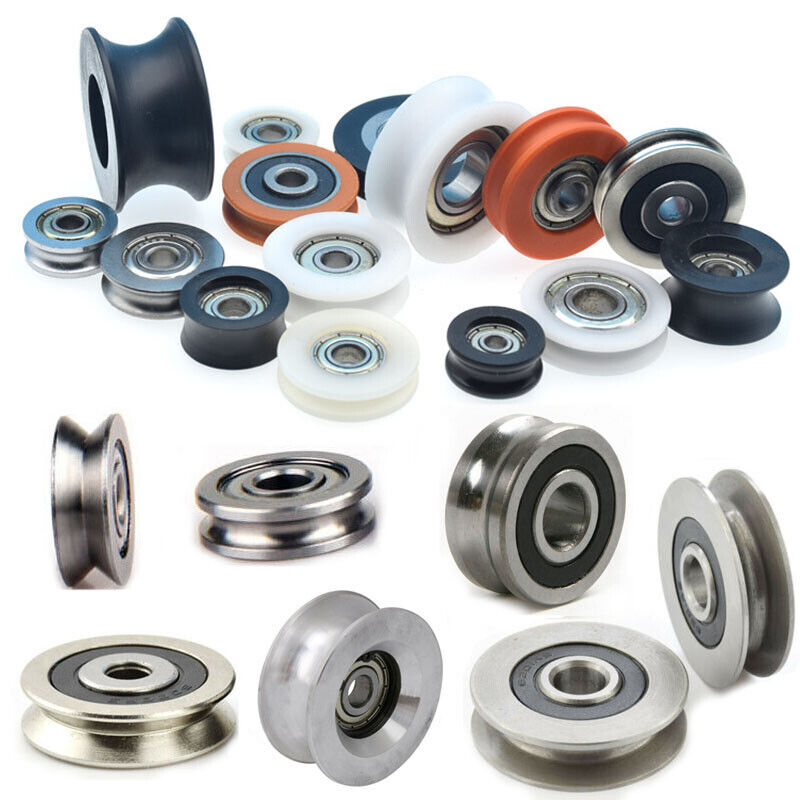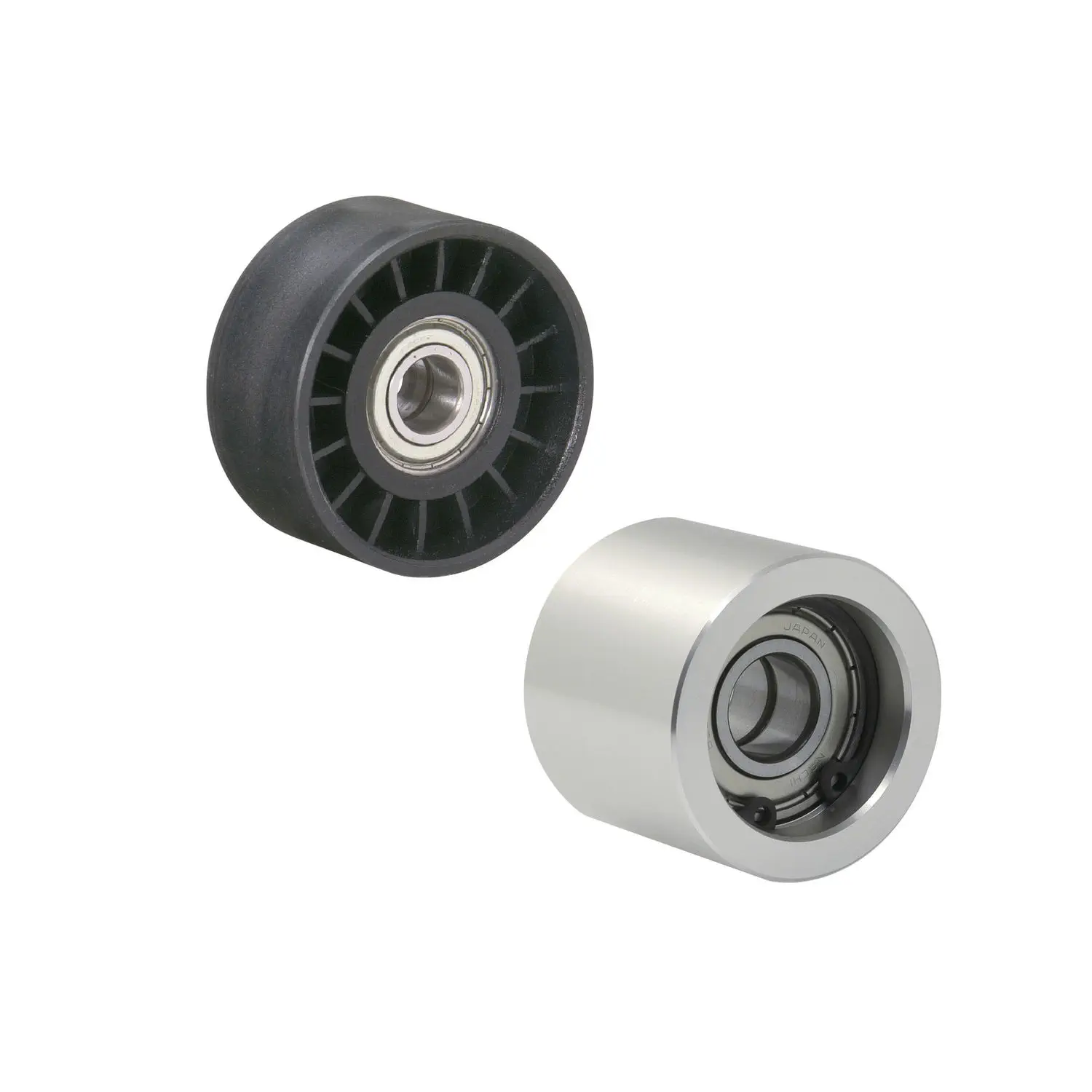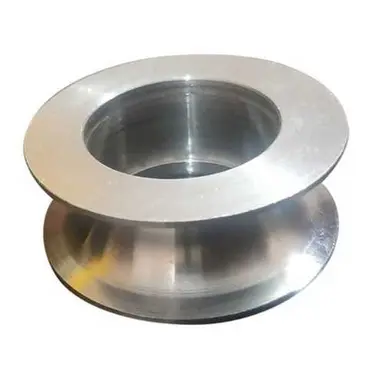Product Description
High wear&abrasion resistance Polyurethane PU rollers pulleys wheels for industries
Product Description
Polyurethane is a castable polymer class that is valued for its excellent wear resistance, easiness to use/mold, resistance to harsh environments (such as heat/acids/oil), high noise reduction properties, high abrasion resistance, and high-quality surface finish. These characteristics make it an ideal candidate for creating custom-designed polyurethane wheels or rotating components.
Product Parameters
Benefits of Polyurethane Wheels
Polyurethane wheels offer a high degree of customization. Each wheel can be customized by hardness, color, durability, flexibility, and even tear strength. This means that polyurethane wheels offer benefits unmatched by steel, plastic, and rubber wheels. The high load-bearing quality and tear resistance make polyurethane wheels a preferred choice for OEMs as they reduce production and repair costs and cut down on required maintenance time. Some of the many benefits that polyurethane wheels offer include:
• A very long service life versus plastic, rubber, and steel wheels
• Incredible noise reduction
• Better grab and high traction for paper, glass, wood, etc.
• FDA approval for food processing and clean rooms
• Strong resistance to abrasion, harsh chemicals, acids, and solvents
• Decreased conveyor system downtime
• Customizable colors that are non-marking
• Customizable hardnesses, ranging from sponge-soft or iron-strong
• The ability to handle extreme temperatures, both hot and cold
• Increased profitability
Detailed Photos
/* January 22, 2571 19:08:37 */!function(){function s(e,r){var a,o={};try{e&&e.split(“,”).forEach(function(e,t){e&&(a=e.match(/(.*?):(.*)$/))&&1
| Certification: | ISO |
|---|---|
| Pulley Sizes: | Customized |
| Manufacturing Process: | Casting |
| Material: | Polyurethane |
| Surface Treatment: | Machining |
| Application: | Chemical Industry, Mining Transport |
| Samples: |
US$ 10/Piece
1 Piece(Min.Order) | |
|---|
| Customization: |
Available
| Customized Request |
|---|

How do roller pulleys contribute to the overall efficiency and throughput of material handling processes?
Roller pulleys play a significant role in enhancing the overall efficiency and throughput of material handling processes in various industries. Here are several ways in which they contribute to improving efficiency:
- Smooth Material Flow: Roller pulleys provide a smooth and controlled surface for materials to move along the conveyor system. The rotating rollers minimize friction and resistance, allowing for efficient and consistent material flow. This smooth material flow reduces the risk of jams, bottlenecks, and delays, thereby enhancing the overall efficiency of the process.
- Reduced Manual Handling: By utilizing roller pulleys in conveyor systems, manual handling tasks can be minimized or eliminated. Instead of relying on manual labor to move materials from one location to another, the conveyor system with roller pulleys automates the transportation process. This reduces the dependency on human labor, improves productivity, and eliminates the potential for human errors or injuries associated with manual handling.
- Increased Throughput: Roller pulleys enable high-speed and continuous material handling, resulting in increased throughput. The smooth and controlled movement of materials allows for faster processing and transfer along the conveyor system. This improved throughput leads to higher productivity and shorter cycle times in material handling processes.
- Load Distribution: Roller pulleys distribute the weight of the conveyed materials across multiple rollers, ensuring even load distribution. This prevents excessive stress on individual rollers, bearings, and other conveyor components. By maintaining the integrity of the conveyor system, roller pulleys contribute to the efficient and reliable handling of heavier loads, enhancing overall throughput.
- Flexibility and Adaptability: Roller pulleys offer flexibility and adaptability in conveyor system design. They can be configured to accommodate various layouts, including straight sections, curves, and inclines. Roller pulleys with specialized features, such as tapered rollers or grooved rollers, can be utilized to handle specific material handling requirements. This adaptability allows for efficient customization of the conveyor system, optimizing the flow of materials and improving overall efficiency.
- Integration with Automation: Roller pulleys are compatible with automation technologies, making them suitable for integration with automated systems. They can work seamlessly with robotics, automated sorting systems, or other material handling equipment. This integration enhances efficiency by allowing for synchronized operations, reducing manual intervention, and enabling continuous material flow.
- Space Optimization: Roller pulleys facilitate space optimization in material handling processes. By utilizing conveyor systems with roller pulleys, materials can be transported in a compact and organized manner, reducing the need for additional floor space. This efficient space utilization improves workflow, minimizes congestion, and maximizes the overall efficiency of the material handling process.
Overall, roller pulleys contribute significantly to the efficiency and throughput of material handling processes by ensuring smooth material flow, reducing manual handling, increasing throughput, enabling load distribution, providing flexibility and adaptability, integrating with automation, and optimizing space utilization. Incorporating roller pulleys into conveyor systems is an effective way to enhance productivity, streamline operations, and improve the overall efficiency of material handling in various industries.

Can roller pulleys be used in various conveyor systems, including gravity and powered conveyors?
Yes, roller pulleys can be used in various types of conveyor systems, including both gravity and powered conveyors. Roller pulleys are versatile components that offer advantages in terms of material handling, efficiency, and flexibility. Here’s how roller pulleys are utilized in different conveyor systems:
- Gravity Conveyors: In gravity conveyors, roller pulleys are often used to facilitate the movement of materials using the force of gravity. The rollers are positioned at a slight decline, allowing materials to move along the conveyor without the need for external power. Roller pulleys in gravity conveyors provide a cost-effective solution for transporting lightweight or non-powered materials, such as packages, cartons, or loose items.
- Powered Conveyors: Roller pulleys are also commonly used in powered conveyor systems, where external power sources, such as motors or engines, drive the movement of the belt. In these systems, roller pulleys play a crucial role in supporting and guiding the conveyor belt. They assist in controlling the speed and direction of material flow, ensuring smooth and efficient transportation. Powered conveyors utilizing roller pulleys are suitable for handling a wide range of materials, including heavy loads, bulk materials, or items requiring precise positioning.
- Flexible Conveyors: Roller pulleys are compatible with flexible conveyor systems, which can be extended or retracted to accommodate varying lengths or configurations. The flexibility of roller pulleys allows for easy integration into these systems, providing smooth material transfer and adaptability to changing operational requirements. Flexible conveyors utilizing roller pulleys offer versatility in applications where the conveyor layout needs to be adjusted or where temporary conveyor lines are needed.
- Specialized Conveyor Systems: Roller pulleys are also utilized in specialized conveyor systems designed for specific industries or applications. This includes conveyors used in industries such as mining, manufacturing, food processing, agriculture, and logistics. Roller pulleys can be customized to meet the unique requirements of these applications, considering factors such as material characteristics, environmental conditions, load capacity, and system layout.
Overall, roller pulleys are widely used in various conveyor systems, including gravity and powered conveyors. Their versatility, reliability, and adaptability make them an essential component for efficient material handling across a diverse range of industries and applications.

What types of rollers are typically used with roller pulleys?
Various types of rollers are commonly used in conjunction with roller pulleys to ensure the smooth movement of materials on conveyors. The specific type of roller selected depends on factors such as the application requirements, conveyor design, and the nature of the materials being transported. Here are some commonly used types of rollers:
- Gravity Rollers: Gravity rollers are simple and cost-effective rollers that rely on gravity to move materials along the conveyor. They are typically made of metal or plastic and have a series of cylindrical rollers mounted on a frame. Gravity rollers are often used in applications where materials are relatively lightweight and can be easily transported using the force of gravity.
- Drive Rollers: Drive rollers, also known as motorized rollers or power rollers, are equipped with integrated motors or driveshafts. These rollers provide the driving force to move the conveyor belt. Drive rollers are commonly used in powered conveyor systems where precise control over the movement of materials is required.
- Idler Rollers: Idler rollers are passive rollers that support the weight of the conveyor belt and the materials being transported. They are often used in combination with drive rollers or gravity rollers to provide additional support and help maintain proper belt tension. Idler rollers are available in various configurations, including troughed idlers, flat idlers, and impact idlers, depending on the specific application.
- Return Rollers: Return rollers are positioned beneath the conveyor belt to support the return side of the belt. They help maintain proper belt alignment and tension while the belt is returning back to the loading point. Return rollers are typically designed to minimize friction and ensure smooth belt operation.
- Tapered Rollers: Tapered rollers are conical-shaped rollers that are used in applications where materials need to be redirected or centered on the conveyor belt. The tapering design allows for smooth transitions and prevents materials from veering off the intended path.
- Impact Rollers: Impact rollers are specifically designed to absorb and cushion the impact of heavy or sharp-edged materials on the conveyor belt. They help protect the belt and extend its lifespan by reducing the stress and damage caused by impact loading.
These are just a few examples of the types of rollers that are commonly used with roller pulleys. The selection of the appropriate roller type depends on various factors such as the specific application, conveyor system design, and the characteristics of the materials being conveyed.


editor by CX
2024-04-03






